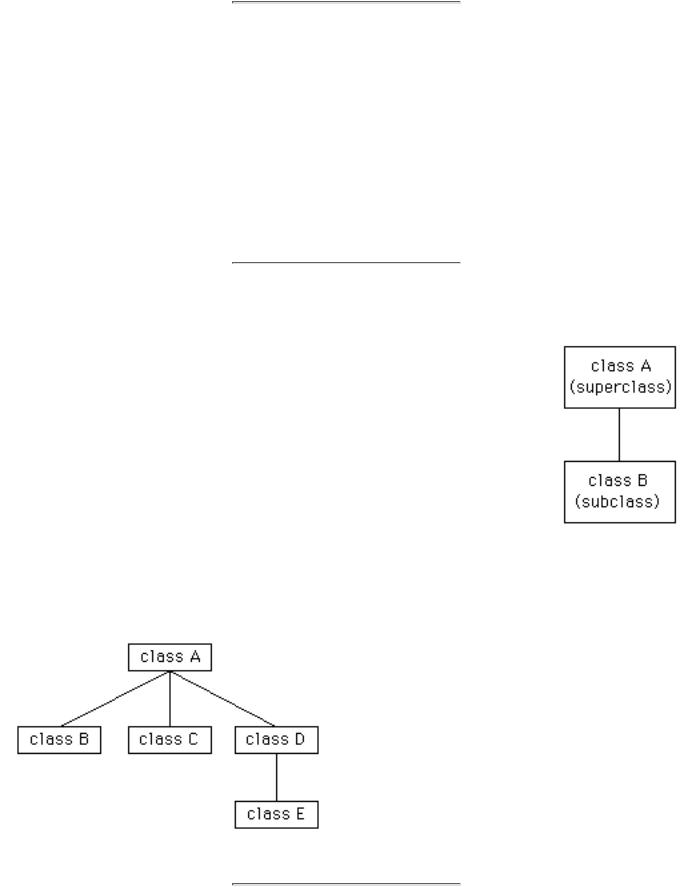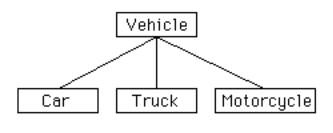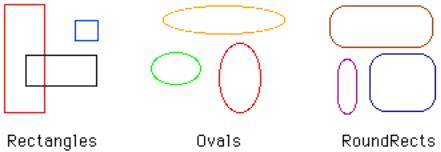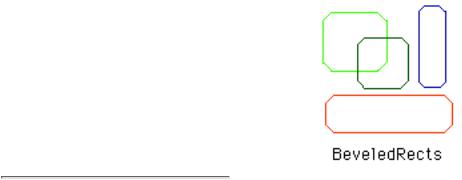
- •Cover Page
- •Java Programming: Contents
- •Java Programming: Preface to the Third Edition
- •Java Programming: Preface to Previous Edition
- •Java Programing: Chapter 1
- •Java Programing: Section 1.1
- •Java Programing: Section 1.2
- •Java Programing: Section 1.3
- •Java Programing: Section 1.4
- •Java Programing: Section 1.5
- •Java Programing: Section 1.6
- •Java Programing: Section 1.7
- •Java Programing: Chapter 1 Quiz
- •Java Programing: Chapter 2 Index
- •Java Programing: Section 2.1
- •Java Programing: Section 2.2
- •Java Programing: Section 2.3
- •Java Programing: Section 2.4
- •Java Programing: Section 2.5
- •Java Programing: Chapter 2 Exercises
- •Java Programing: Chapter 2 Quiz
- •Java Programing: Chapter 3 Index
- •Java Programing: Section 3.1
- •Java Programing: Section 3.2
- •Java Programing: Section 3.3
- •Java Programing: Section 3.4
- •Java Programing: Section 3.5
- •Java Programing: Section 3.6
- •Java Programing: Section 3.7
- •Java Programing: Chapter 3 Exercises
- •Java Programing: Chapter 3 Quiz
- •Java Programing: Chapter 4 Index
- •Java Programing: Section 4.1
- •Java Programing: Section 4.2
- •Java Programing: Section 4.3
- •Java Programing: Section 4.4
- •Java Programing: Section 4.5
- •Java Programing: Section 4.6
- •Java Programing: Section 4.7
- •Java Programing: Chapter 4 Exercises
- •Java Programing: Chapter 4 Quiz
- •Java Programing: Chapter 5 Index
- •Java Programing: Section 5.1
- •Java Programing: Section 5.2
- •Java Programing: Section 5.3
- •Java Programing: Section 5.4
- •Java Programing: Section 5.5
- •Java Programing: Chapter 5 Exercises
- •Java Programing: Chapter 5 Quiz
- •Java Programing: Chapter 6 Index
- •Java Programing: Section 6.1
- •Java Programing: Section 6.2
- •Java Programing: Section 6.3
- •Java Programing: Section 6.4
- •Java Programing: Section 6.5
- •Java Programing: Section 6.6
- •Java Programing: Section 6.7
- •Java Programing: Chapter 6 Exercises
- •Java Programing: Chapter 6 Quiz
- •Java Programing: Chapter 7 Index
- •Java Programing: Section 7.1
- •Java Programing: Section 7.2
- •Java Programing: Section 7.3
- •Java Programing: Section 7.4
- •Java Programing: Section 7.5
- •Java Programing: Section 7.6
- •Java Programing: Section 7.7
- •Java Programing: Section 7.8
- •Java Programing: Chapter 7 Exercises
- •Java Programing: Chapter 7 Quiz
- •Java Programing: Chapter 8 Index
- •Java Programing: Section 8.1
- •Java Programing: Section 8.2
- •Java Programing: Section 8.3
- •Java Programing: Section 8.4
- •Java Programing: Section 8.5
- •Java Programing: Chapter 8 Exercises
- •Java Programing: Chapter 8 Quiz
- •Java Programing: Chapter 9 Index
- •Java Programing: Section 9.1
- •Java Programing: Section 9.2
- •Java Programing: Section 9.3
- •Java Programing: Section 9.4
- •Java Programing: Chapter 9 Exercises
- •Java Programing: Chapter 9 Quiz
- •Java Programing: Chapter 10 Index
- •Java Programing: Section 10.1
- •Java Programing: Section 10.2
- •Java Programing: Section 10.3
- •Java Programing: Section 10.4
- •Java Programing: Section 10.5
- •Java Programing: Chapter 10 Exercises
- •Java Programing: Chapter 10 Quiz
- •Java Programing: Chapter 11 Index
- •Java Programing: Section 11.1
- •Java Programing: Section 11.2
- •Java Programing: Section 11.3
- •Java Programing: Section 11.4
- •Java Programing: Section 11.5
- •Java Programming, Chapter 11 Exercises
- •Java Programming, Chapter 11 Quiz
- •Java Programing: Appendix 1 Index
- •Java Programing: Appendix 1, Section 1
- •Java Programing: Appendix 1, Section 2
- •Java Programing: Appendix 1, Section 3
- •Some Notes on Java Programming Environments

Java Programing: Section 5.4
Section 5.4
Inheritance, Polymorphism, and Abstract Classes
A CLASS REPRESENTS A SET OF OBJECTS which share the same structure and behaviors. The class
determines the structure of objects by specifying variables that are contained in each instance of the class, and it determines behavior by providing the instance methods that express the behavior of the objects. This is a powerful idea. However, something like this can be done in most programming languages. The central new idea in object-oriented programming -- the idea that really distinguishes it from traditional
programming -- is to allow classes to express the similarities among objects that share some, but not all, of their structure and behavior. Such similarities can expressed using inheritance and polymorphism.
The topics covered in this section are relatively advanced aspects of object-oriented programming. Any programmer should know what is meant by subclass, inheritance, and polymorphism. However, it will probably be a while before you actually do anything with inheritance except for extending classes that already exist.
The term inheritance refers to the fact that one class can inherit part or all of its structure and behavior from another class. The class that does the inheriting is said to be a subclass of the class from which it inherits. If class B is a subclass of class A, we also say that class A is a superclass of class B.
(Sometimes the terms derived class and base class are used instead of subclass and superclass.) A subclass can add to the structure and behavior that it inherits. It can also replace or modify inherited behavior (though not inherited structure). The relationship between subclass and superclass is sometimes shown by a diagram in which the subclass is shown below, and connected to, its superclass.
In Java, when you create a new class, you can declare that it is a subclass of an existing class. If you are defining a class named "B" and you want it to be a subclass of a class named "A", you would write
class B extends A {
.
. // additions to, and modifications of,
. // stuff inherited from class A
.
}
Several classes can be declared as subclasses of the same superclass. The subclasses, which might be referred to as "sibling classes," share some structures and behaviors -- namely, the ones they inherit from their common superclass. The superclass expresses these shared structures and behaviors. In the diagram to the left, classes B, C, and D are sibling classes. Inheritance can also extend over several "generations" of classes. This is shown in the diagram, where class E is a subclass of class D which is itself a subclass of class A. In this case, class E is considered to be a subclass of class A, even though it is not a direct subclass.
http://math.hws.edu/javanotes/c5/s4.html (1 of 8) [5/24/2000 8:37:43 AM]

Java Programing: Section 5.4
Let's look at an example. Suppose that a program has to deal with motor vehicles, including cars, trucks, and motorcycles. (This might be a program used by a
Department of Motor Vehicles to keep track of registrations.) The program could use a class named
Vehicle to represent all types of vehicles. The Vehicle class could include instance variables such as registrationNumber and owner and instance
methods such as transferOwnership(). These are variables and methods common to all vehicles. Three subclasses of Vehicle -- Car, Truck, and Motorcycle -- could then be used to hold variables and methods specific to particular types of vehicles. The Car class might add an instance variable numberOfDoors, the Truck class might have numberOfAxels, and the Motorcycle class could have a boolean variable hasSidecar. (Well, it could in theory at least, even if it might give a chuckle to the people at the Department of Motor Vehicles.) The declarations of these classes in Java program would look, in outline, like this:
class Vehicle {
int registrationNumber;
Person owner; // (assuming that a Person class has been defined) void transferOwnership(Person newOwner) {
. . .
}
. . .
}
class Car extends Vehicle { int numberOfDoors;
. . .
}
class Truck extends Vehicle { int numberOfAxels;
. . .
}
class Motorcycle extends Vehicle { boolean hasSidecar;
. . .
}
Suppose that myCar is a variable of type Car that has been declared and initialized with the statement
Car myCar = new Car();
(Note that, as with any variable, it is OK to declare a variable and initialize it in a single statement. This is equivalent to the declaration "Car myCar;" followed by the assignment statement "myCar = new Car();".) Given this declaration, a program could to refer to myCar.numberOfDoors, since numberOfDoors is an instance variable in the class Car. But since class Car extends class Vehicle, a car also has all the structure and behavior of a vehicle. This means that myCar.registrationNumber,
myCar.owner, and myCar.transferOwnership() also exist.
Now, in the real world, cars, trucks, and motorcycles are in fact vehicles. The same is true in a program. That is, an object of type Car or Truck or Motorcycle is automatically an object of type Vehicle. This brings us to the following Important Fact:
A variable that can hold a reference
to an object of class A can also hold a reference to an object belonging to any subclass of A.
The practical effect of this in our example is that an object of type Car can be assigned to a variable of type
Vehicle. That is, it would be legal to say
http://math.hws.edu/javanotes/c5/s4.html (2 of 8) [5/24/2000 8:37:43 AM]

Java Programing: Section 5.4
Vehicle myVehicle = myCar;
or even
Vehicle myVehicle = new Car();
After either of these statements, the variable myVehicle holds a reference to a Vehicle object that happens to be an instance of the subclass, Car. The object "remembers" that it is in fact a Car, and not just a Vehicle. Information about the actual class of an object is stored as part of that object. It is even possible to test whether a given object belongs to a given class, using the instanceof operator. The test:
if (myVehicle instanceof Car) ...
determines whether the object referred to by myVehicle is in fact a car.
On the other hand, if myVehicle is a variable of type Vehicle the assignment statement
myCar = myVehicle;
would be illegal because myVehicle could potentially refer to other types of vehicles that are not cars. This is similar to a problem we saw previously in Section 2.5: The computer will not allow you to assign an
int value to a variable of type short, because not every int is a short. Similarly, it will not allow you to assign a value of type Vehicle to a variable of type Car because not every vehicle is a car. As in the case of ints and shorts, the solution here is to use type-casting. If, for some reason, you happen to know that myVehicle does in fact refer to a Car, you can use the type cast (Car)myVehicle to tell the computer to treat myVehicle as if it were actually of type Car. So, you could say
myCar = (Car)myVehicle;
and you could even refer to ((Car)myVehicle).numberOfDoors. As an example of how this could be used in a program, suppose that you want to print out relevant data about a vehicle. You could say:
System.out.println("Vehicle Data:"); System.out.println("Registration number: "
+ myVehicle.registrationNumber); if (myVehicle instanceof Car) {
System.out.println("Type of vehicle: Car"); Car c;
c = (Car)myVehicle;
System.out.println("Number of doors: |
" + c.numberOfDoors); |
} |
|
else if (myVehicle instanceof Truck) { |
|
System.out.println("Type of vehicle: |
Truck"); |
Truck t; |
|
t = (Truck)myVehicle; |
|
System.out.println("Number of axels: |
" + t.numberOfAxels); |
} |
|
else if (myVehicle instanceof Motorcycle) { |
|
System.out.println("Type of vehicle: |
Motorcycle"); |
Motorcycle m; |
|
m = (Motorcycle)myVehicle; |
|
System.out.println("Has a sidecar: |
" + m.hasSidecar); |
} |
|
Note that for object types, when the computer executes a program, it checks whether type-casts are valid.
So, for example, if myVehicle refers to an object of type Truck, then the type cast (Car)myVehicle will produce an error.
http://math.hws.edu/javanotes/c5/s4.html (3 of 8) [5/24/2000 8:37:43 AM]

Java Programing: Section 5.4
As another example, consider a program that deals with shapes drawn on the screen. Let's say that the shapes include rectangles, ovals, and roundrects of various colors.
Three classes, Rectangle, Oval, and RoundRect, could be used to represent the three types of shapes. These three classes would have a common superclass, Shape, to represent features that all three shapes have in common. The Shape class could include instance variables to represent the color, position, and size of a shape. It could include instance methods for changing the color, position, and size of a shape. Changing the color, for example, might involve changing the value of an instance variable, and then redrawing the shape in its new color:
class Shape {
Color color; // Color of the shape. (Recall that class Color
//is defined in package java.awt. Assume
//that this class has been imported.)
void setColor(Color newColor) {
// Method to change the color of the shape.
color = newColor; // change value of instance variable redraw(); // redraw shape, which will appear in new color
}
void redraw() {
//method for drawing the shape
?? ? // what commands should go here?
}
. . . |
// more instance variables and methods |
} // end of class Shape
Now, you might see a problem here with the method redraw(). The problem is that each different type of shape is drawn differently. The method setColor() can be called for any type of shape. How does the computer know which shape to draw when it executes the redraw()? Informally, we can answer the question like this: The computer executes redraw() by asking the shape to redraw itself. Every shape object knows what it has to do to redraw itself.
In practice, this means that each of the specific shape classes has its own redraw() method:
class Rectangle extends Shape { void redraw() {
. . . // commands for drawing a rectangle
}
. . . // possibly, more methods and variables
}
class Oval extends Shape { void redraw() {
. . . // commands for drawing an oval
}
. . . // possibly, more methods and variables
http://math.hws.edu/javanotes/c5/s4.html (4 of 8) [5/24/2000 8:37:43 AM]

Java Programing: Section 5.4
}
class RoundRect extends Shape { void redraw() {
. . . // commands for drawing a rounded rectangle
}
. . . // possibly, more methods and variables
}
If oneShape is a variable of type Shape, it could refer to an object of any of the types, Rectangle, Oval, or RoundRect. As a program executes, and the value of oneShape changes, it could even refer to objects of different types at different times! Whenever the statement
oneShape.redraw();
is executed, the redraw method that is actually called is the one appropriate for the type of object to which oneShape actually refers. There may be no way of telling, from looking at the text of the program, what shape this statement will draw, since it depends on the value that oneShape happens to have when the program is executed. Even more is true. Suppose the statement is in a loop and gets executed many times. If the value of oneShape changes as the loop is executed, it is possible that the very same statement "oneShape.redraw();" will call different methods and draw different shapes as it is executed over and over. We say that the redraw() method is polymorphic. A method is polymorphic if the action performed by the method depends on the actual type of the object to which the method is applied. Polymorphism is one of the major distinguishing features of object-oriented programming.
Perhaps this becomes more understandable if we change our terminology a bit: In object-oriented programming, calling a method is often referred to as sending a message to an object. The object responds to the message by executing the appropriate method. The statement "oneShape.redraw();" is a message to the object referred to by oneShape. Since that object knows what type of object it is, it knows how it should respond to the message. From this point of view, the computer always executes "oneShape.redraw();" in the same way: by sending a message. The response to the message depends, naturally, on who receives it. From this point of view, objects are active entities that send and receive messages, and polymorphism is a natural, even necessary, part of this view. Polymorphism just means that different objects can respond to the same message in different ways.
One of the most beautiful things about polymorphism is that it lets code that you write do things that you didn't even conceive of, at the time you wrote it. If for some reason, I decide that I want to add beveled rectangles to the types of shapes my program can deal with, I can write a new subclass, BeveledRect, of class Shape and give it its own redraw() method. Automatically, code that I wrote previously -- such as the statement oneShape.redraw() -- can now suddenly start drawing beveled rectangles, even though the beveled rectangle class didn't exist when I wrote the statement!
In the statement "oneShape.redraw();", the redraw message is sent to the object oneShape. Look back at the method from the Shape class for changing the color of a shape:
void setColor(Color newColor) {
color = newColor; // change value of instance variable redraw(); // redraw shape, which will appear in new color
}
A redraw message is sent here, but which object is it sent to? Well, the setColor method is itself a message that was sent to some object. The answer is that the redraw message is sent to that same object, the one that received the setColor message. If that object is a rectangle, then it is the redraw() method from the Rectangle class that is executed. If the object is an oval, then it is the redraw() method from
http://math.hws.edu/javanotes/c5/s4.html (5 of 8) [5/24/2000 8:37:43 AM]

Java Programing: Section 5.4
the Oval class. This is what you should expect, but it means that the redraw(); statement in the setColor() method does not necessarily call the redraw() method in the Shape class! The redraw() method that is executed could be in any subclass of Shape.
Again, this is not a real surprise if you think about it in the right way. Remember that an instance method is always contained in an object. The class only contains the source code for the method. When a Rectangle object is created, it contains a redraw() method. The source code for that method is in the Rectangle class. The object also contains a setColor() method. Since the Rectangle class does not define a setColor() method, the source code for the rectangle's setColor() method comes from the superclass, Shape. But even though the source codes for the two methods are in different classes, the methods themselves are part of the same object. When the rectangle's setColor() method is executed and calls redraw(), the redraw() method that is executed is the one in the same object.
Whenever a Rectangle, Oval, or RoundRect object has to draw itself, it is the redraw() method in the appropriate class that is executed. This leaves open the question, What does the redraw() method in the Shape class do? How should it be defined?
The answer may be surprising: We should leave it blank! The fact is that the class Shape represents the abstract idea of a shape, and there is no way to draw such a thing. Only particular, concrete shapes like rectangles and ovals can be drawn. So, why should there even be a redraw() method in the Shape class? Well, it has to be there, or it would be illegal to call it in the setColor() method of the Shape class, and it would be illegal to write "oneShape.redraw();", where oneShape is a variable of type Shape. The computer would say, oneShape is a variable of type Shape and there's no redraw() method in the Shape class.
Nevertheless the version of redraw() in the Shape class will never be called. In fact, if you think about it, there can never be any reason to construct an actual object of type Shape! You can have variables of type Shape, but the objects they refer to will always belong to one of the subclasses of Shape. We say that Shape is an abstract class. An abstract class is one that is not used to construct objects, but only as a basis for making subclasses. An abstract class exists only to express the common properties of all its subclasses.
Similarly, we could say that the redraw() method in class Shape is an abstract method, since it is never meant to be called. In fact, there is nothing for it to do -- any actual redrawing is done by redraw() methods in the subclasses of Shape. The redraw() method in Shape has to be there. But it is there only to tell the computer that all Shapes understand the redraw message. As an abstract method, it exists merely to specify the common interface of all the actual, concrete versions of redraw() in the subclasses of Shape. There is no reason for the abstract redraw() in class Shape to contain any code at all.
Shape and its redraw() method are semantically abstract. You can also tell the computer, syntactically, that they are abstract by adding the modifier "abstract" to their definitions. For an abstract method, the block of code that gives the implementation of an ordinary method is replaced by a semicolon. An implementation must be provided for the abstract method in any concrete subclass of the abstract class. Here's what the Shape class would look like as an abstract class:
abstract class Shape {
Color color; |
// color |
of shape. |
||
void setColor(Color newColor) |
{ |
|||
// |
method to change the |
color of the shape |
||
color |
= newColor; // |
change value of instance variable |
||
redraw(); // redraw shape, |
which will appear in new color |
|||
} |
|
|
|
|
abstract |
void redraw(); |
|
|
|
http://math.hws.edu/javanotes/c5/s4.html (6 of 8) [5/24/2000 8:37:43 AM]

Java Programing: Section 5.4
//abstract method -- must be defined in
//concrete subclasses
. . . |
// more instance variables and methods |
} // end of class Shape
Once you have done this, it becomes illegal to try to create actual objects of type Shape, and the computer will report an error if you try to do so.
In Java, every class that you declare has a superclass. If you don't specify a superclass, then the superclass is automatically taken to be Object, a predefined class that is part of the package java.lang. (The class Object itself has no superclass, but it is the only class that has this property.) Thus,
class myClass { . . .
is exactly equivalent to
class myClass extends Object { . . .
Every other class is, directly or indirectly, a subclass of Object. This means that any object, belonging to any class whatsoever, can be assigned to a variable of type Object. The class Object represents very general properties that are shared by all objects, belonging to any class. Object is the most abstract class of all!
The Object class actually finds a use in some cases where objects of a very general sort are being manipulated. For example, java has a standard class, java.util.Vector, that represents a list of Objects. (The Vector class is in the package java.util. If you want to use this class in a program you write, you would ordinarily use an import statement to make it possible to use the short name, Vector, instead of the full name, java.util.Vector. See Section 4.5 for a discussion of packages
and import.) The Vector class is very convenient, because a Vector can hold any number of objects, and it will grow, when necessary, as objects are added to it. Since the items in the list are of type Object, the list can actually hold objects of any type.
A program that wants to keep track of various Shapes that have been drawn on the screen can store those shapes in a Vector. Suppose that the Vector is named listOfShapes. A shape, oneShape, can be added to the end of the list by calling the instance method "listOfShapes.addElement(oneShape);". The shape could be removed from the list with "listOfShapes.removeElement(oneShape);". The number of shapes in the list is given by the function "listOfShapes.size()". And it is possible to retrieve the i-th object from the list with the function call "listOfShapes.elementAt(i)". (Items in the list are numbered from 0 to listOfShapes.size() - 1.) However, note that this method returns an Object, not a Shape. (Of course, the people who wrote the Vector class didn't even know about Shapes, so the method they wrote could hardly have a return type of Shape!) Since you know that the items in the list are, in fact, Shapes and not just Objects, you can type-cast the Object returned by listOfShapes.elementAt(i) to be a value of type Shape:
oneShape = (Shape)listOfShapes.elementAt(i);
Let's say, for example, that you want to redraw all the shapes in the list. You could do this with a simple for loop, which is lovely example of object-oriented programming and polymorphism:
for (int i = 0; i < listOfShapes.size(); i++) {
Shape s; // i-th element of the list, considered as a Shape s = (Shape)listOfShapes.elementAt(i);
s.redraw();
}
http://math.hws.edu/javanotes/c5/s4.html (7 of 8) [5/24/2000 8:37:43 AM]

Java Programing: Section 5.4
It might be worthwhile to look at an applet that actually uses an abstract Shape class and a Vector to hold a list of shapes:
Sorry, your browser doesn't support Java.
If you click one of the buttons along the bottom of this applet, a shape will be added to the screen in the upper left corner of the applet. The color of the shape is given by the "Choice menu" in the lower right. Once a shape is on the screen, you can drag it around with the mouse. A shape will maintain the same front-to-back order with respect to other shapes on the screen, even while you are dragging it. However, you can move a shape out in front of all the other shapes if you hold down the shift key as you click on it.
In this applet the only time when the actual class of a shape is used is when that shape is added to the screen. Once the shape has been created, it is manipulated entirely as an abstract shape. The routine that implements dragging, for example, works only with variables of type Shape. As the Shape is being dragged, the dragging routine just calls the Shape's draw method each time the shape has to be drawn, so it doesn't have to know how to draw the shape or even what type of shape it is. The object is responsible for drawing itself. If I wanted to add a new type of shape to the program, I would define a new subclass of
Shape, add another button to the applet, and program the button to add the correct type of shape to the screen. No other changes in the programming would be necessary.
You might want to look at the source code for this applet, ShapeDraw.java, even though you won't be able
to understand all of it at this time. Even the definitions of the shape classes are somewhat different from those I described in this chapter. (For example, the draw() method used in the applet has a parameter of type Graphics. This parameter is required because of the way Java handles all drawing.) I'll return to this example in later chapters when you know more about applets. However, it would still be worthwhile to look at the definition of the Shape class and its subclasses in the source code for the applet. You might also check how a Vector is used to hold a list of shapes.
[ Next Section | Previous Section | Chapter Index | Main Index ]
http://math.hws.edu/javanotes/c5/s4.html (8 of 8) [5/24/2000 8:37:43 AM]
